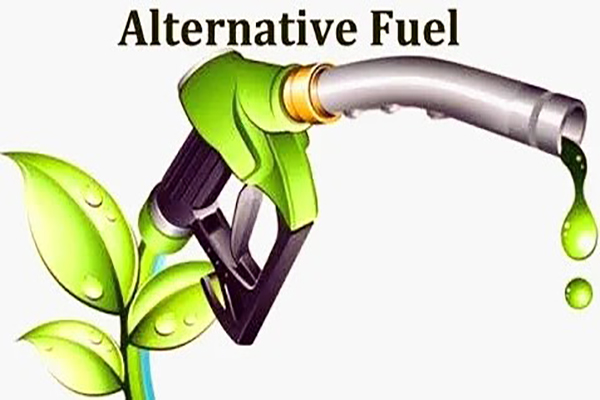Need of alternate fuels
In a fuel dependent civilization, the increasing use and depleting resources of conventional fuels are always the topic of discussion and great concern and therefore, scientists & technologists are continuously looking for alternate fuels. Convention fuels like petrol and its derivatives as well as coal are said to be of limited stock and time is not far when these commodities will be out of reach of a common man. Technology at present is also totally designed to suit these fuels and big or dominating technological houses due to economical compulsions (profits) are also not taking any effective initiatives to make technological changes to develop technology suitable to alternate fuels. Similarly, different energy generation technologies like solar, wind, geo-thermal, wave, and many more on papers which are independent or free from the use of conventional fuels are also not maturing to the level to replace the use of conventional energy producing methodologies. Firstly, it will be more appropriate to develop alternate fuels which are easy to produce, cost effect, sustainable and easy to use by masses then only the dependence of mankind on conventional fuels will be reduced. In this article, a brief summary about the present status of alternate fuels is given.
Alternate fuels
Alternative fuels, also known as non-conventional and advanced fuels, are fuels derived from sources other than petroleum. Alternative fuels include gaseous fossil fuels like propane, natural gas, methane, and ammonia; biofuels like biodiesel, bio-alcohol, and refuse-derived fuel; and other renewable fuels like hydrogen and electricity. These fuels are intended to substitute for more carbon intensive energy sources like gasoline and diesel in transportation and can help to contribute to decarbonization and reductions in pollution. Alternative fuel is also shown to reduce non-carbon emissions such as the release of nitric oxide and nitrogen dioxide, as well as Sulphur dioxide and other harmful gases in the exhaust. This is especially important in industries such as mining, where toxic gases can accumulate more easily.
More than a dozen alternative fuels are in production or under development for use in alternative fuel vehicles and advanced technology vehicles. Government and private-sector fleets are the primary users for most of these fuels and vehicles, but individual consumers are also increasingly interested in them. Using alternative fuels including electricity and advanced vehicles instead of conventional fuels and vehicles will help to conserve petroleum and lower vehicle emissions. In the country’s pursuit of alternative sources of energy, Indian Oil is focussing on CNG (compressed natural gas), Autogas (LPG), ethanol blended petrol, bio-diesel, and Hydrogen energy. Hydrogen power is a promising alternative fuel option for clean mobility – many experts see it as the fuel of the future. This highly efficient fuel cell technology turns hydrogen gas into electricity without generating emissions other than water vapor. Advantages associated with different alternate fuels can be summarized as:
- Most are produced domestically, reducing our dependence on imported oil, and some are derived from renewable sources. Often, they produce less pollution than gasoline or diesel.
- Ethanol is a widely used renewable fuel made from corn and other plant materials. It is blended with gasoline for use in vehicles.
- It produces less greenhouse gas (GHG) emissions than gasoline or diesel.
- Biodiesel is a renewable fuel that can be manufactured from vegetable oils, animal fats, or recycled cooking grease for use in diesel vehicles.
- Hydrogen is a potentially emissions-free alternative fuel that can be produced from domestic resources for use in fuel cell vehicles.
- Natural gas is a domestically abundant fuel that can have significant cost advantages over gasoline and diesel fuels.
- Propane is a readily available gaseous fuel that has been widely used in vehicles throughout the world for decades.
- Renewable diesel is a biomass-derived transportation fuel suitable for use in diesel engines.
- Sustainable aviation fuel is a fuel derived from renewable feedstocks that enables a reduction in net life cycle carbon dioxide emissions compared to conventional fuels.
Present status
Alternative fuels are also called non-traditional fuels or advanced fuels. They are any materials or chemicals that can be used as fuels to replace traditional fuels. Alternative fuels include gaseous fuels such as hydrogen, natural gas and propane; alcohols such as ethanol, methanol, butanol; vegetable oils and waste-derived oils; and electricity. Alternative Fuel Market study describes how the Alternative Fuel industry is evolving and how major and emerging players in the industry are responding to long term opportunities and short-term challenges they face. One major attraction about Alternative Fuel Industry is its growth rate. The global Alternative Fuel market size was valued at USD 251533.18 Million in 2022 and will reach USD 528144.7 Million in 2028, with a CAGR of 13.16% during 2022-2028. In 2021, the share of the Alternative Fuel market in Asia-Pacific stood at 46.77%. Sinopec is one of the major players operating in the Alternative Fuel market, holding a share of 7.53% in 2021. Sinopec China Petroleum & Chemical Corporation, referred to as Sinopec, is a giant energy and chemical company. It integrates petroleum exploration, extraction, refining, transportation, sales, and production of chemical products, covering the entire upstream, midstream, and downstream processes of petroleum production. Shell is a global group of energy and petrochemical companies with more than 80,000 employees in more than 70 countries. Shell uses advanced technology and innovative methods to help build a sustainable energy future. Shell also invests in electricity, including low-carbon energy sources such as wind and solar; and new fuels for transportation, such as advanced biofuels and hydrogen. Segmentation Overview: Biofuels Biofuel, any fuel derived from biomass-that is, plant or algae material or animal waste. Because this raw material can be easily replenished, unlike fossil fuels such as oil, coal, and natural gas, biofuels are considered a source of renewable energy. Compressed natural gas (CNG) is a kind of natural gas for fuel. As an alternative to petroleum, it is a much safer option among environmentally friendly clean fuels than other fuels when they leak. Liquefied petroleum gas (LPG) is a mixture of propane and butane, usually accompanied by small amounts of propylene and butene. Liquefied petroleum gas is a mixture of hydrocarbon gases. It is used as a fuel in heaters and vehicles, and it is increasingly replacing chlorofluorocarbons as aerosol propellants and refrigerants to reduce the damage to the ozone layer.
Bottlenecks of alternate fuels
These fuels can be used in dedicated systems that burn a single fuel, or in hybrid systems with other fuels (including traditional gasoline or diesel), such as hybrid electric or flexible fuel vehicles. In addition, technological advances in alternative fuel vehicles and active government initiatives, such as investing in electric and hybrid buses for public transportation, are driving the growth of the alternative fuel and hybrid vehicle market. As a result, the demand for alternative fuel vehicles has promoted the development of the alternative fuel industry. The cost of alternative fuels is higher which limits the development of the industry. First, the manufacturing process of alternative fuels is more expensive and challenging than traditional fuels. Because compared with gasoline and diesel, it needs to be scalable and sustainable. At the same time, some more expensive equipment is required to manufacture and use alternative fuels. This also increases the operating costs of alternative fuels. In addition, some alternative fuels need to be mixed with other fuels as additives, and they cannot be used alone. These characteristics also hinder the development of alternative fuels. It can be seen that the current high cost has become one of the factors restricting the development of the industry.















